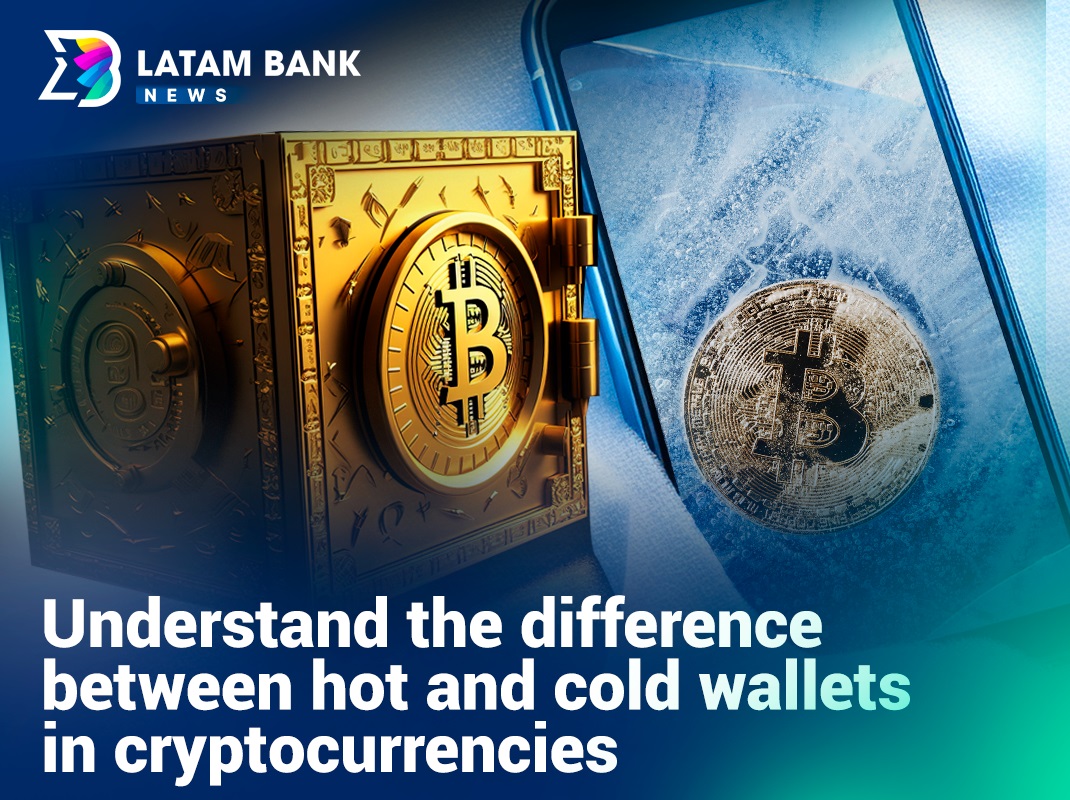When it comes to cryptocurrencies, one of the most important aspects for any user is asset security—a fundamental topic for which you can find tips to protect yourself. In the realm of cryptocurrency storage, the terms “hot wallet” and “cold wallet” are frequently discussed. Each method has specific characteristics in terms of convenience, security, and accessibility.
Are you interested in crypto and want to be a part of Latam Bank? Find out how
According to data from the research firm Future Market Insights, the cryptocurrency wallet market reached a revenue of $1.5 billion in 2023 and is expected to grow to $3.6 billion by 2033, with an annual growth rate of 9.3%. The report also states that cryptocurrency wallets account for nearly 25% of total sales in the broader crypto market. Understanding the differences between a hot wallet and a cold wallet is essential for anyone looking to securely store cryptocurrencies, as it allows users to determine which method best suits their needs.
What is a Hot Wallet?
A hot wallet is a digital cryptocurrency wallet that remains connected to the internet. It allows quick and easy access to cryptocurrencies, making it widely used by traders and users who frequently perform transactions. Hot wallets can be accessed via mobile devices and computers. Additionally, some hot wallets offer integration with exchanges (LINK) and trading platforms, further facilitating the movement of assets.
However, this ease of access comes with a downside: vulnerability to cyberattacks. Because they are connected to the internet, hot wallets are more susceptible to hacking, phishing, and other types of scams. The security of these wallets largely depends on the protective measures used by the platform or application, such as two-factor authentication (2FA), strong passwords, and other security barriers, as well as responsible user behavior.
According to a 2023 survey by CoinGecko, the top 55 hot cryptocurrency wallets recorded over 81.1 million installations. Installations on Android devices accounted for the majority, with 61.6 million, while 19.55 million installations were reported on major web browsers.
What is a Cold Wallet?
A cold wallet is a storage method that does not rely on an internet connection. This provides an extra layer of security, making them less vulnerable to cyberattacks. Cold wallets are ideal for those intending to store assets for long periods without the need to access them frequently.
There are various types of cold wallets, the most common being hardware wallets and paper wallets. Hardware wallets are physical devices, such as USBs or dedicated devices for storing private keys. Paper wallets involve writing down private and public keys on a piece of paper, with no digital connection to the internet.
Data from Cognitive Market Research (LINK) estimates the cold wallet market to reach $1.6 billion in 2024, with an annual growth rate of 9.80% through 2031. North America accounts for 40% of the market, Europe represents 30% of revenues, and Latin America holds a 5% share of the total market, though it also has a significant growth forecast of 9.2% per year.
Advantages and Disadvantages
The primary advantage of hot wallets is convenience. They are ideal for quick, daily transactions, and since they are always connected, they provide immediate access to funds. Furthermore, most hot wallets are user-friendly, making them an excellent choice for beginners in the cryptocurrency world. However, the main disadvantage is security. The internet connection makes these wallets more vulnerable to breaches and data theft, which is why they are not recommended for storing large amounts of crypto assets.
Cold wallets, on the other hand, offer superior security. Since they are not connected to the internet, they are significantly more protected from cyberattacks. This type of wallet is ideal for long-term storage of large amounts of cryptocurrency, giving investors peace of mind. The main disadvantage is the lack of practicality for users who need quick access to their assets.
For daily transactions, using a cold wallet can be inconvenient. Additionally, the risk of physical loss is another factor to consider, especially with paper wallets. If the paper containing private keys is lost or destroyed, access to the cryptocurrency is impossible. Similarly, for hardware wallets, losing or damaging the device can result in the loss of funds if there is no backup of the keys.
Which Should You Choose?
The choice between a hot wallet and a cold wallet depends on the user’s profile and needs. If you conduct daily transactions and need quick and easy access to your assets, a hot wallet might be the best option. However, it is always advisable to keep only a limited amount in hot wallets to minimize the risk of loss in case of an attack.
On the other hand, if you are a long-term investor planning to store your cryptocurrencies for an extended period without frequent access, a cold wallet is the safer choice. In many cases, investors opt for a hybrid approach, using a hot wallet for daily transactions and a cold wallet to securely store the bulk of their assets.





